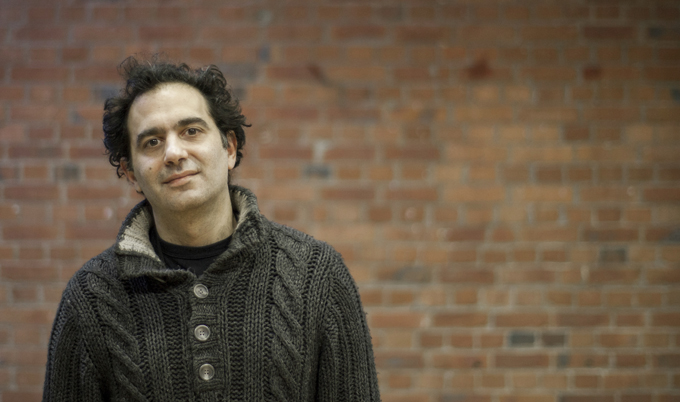Conversation Little Richard
Comment: Little Richard’s scream kicked off rock'n'roll
Published on: 11 May 2020
Writing for The Conversation, Dr Adam Behr pays tribute to Little Richard, who died aged 87, and was indisputably one of the seminal rock'n'roll artists.

When British author Nik Cohn wrote one of the earliest histories of rock in 1969, his title was the ostensibly nonsensical Awopbopaloobop Alopbamboom. It was still instantly recognisable, and perfectly conveyed the sense of explosion at the birth of the genre. The phrase was originally coined, of course, by Little Richard – born Richard Wayne Penniman – who died on Saturday May 9 aged 87, and was indisputably one of the seminal rock'n'roll artists.
A host of factors provided fertile soil for the emergence of rock'n'roll as a potent musical force. They included deregulation that allowed radio stations to mushroom across the US; the development of vinyl and the 45rpm record; and new transistor radios that were affordable and portable for the burgeoning teen market.
But a handful of figures at the centre of that mid-1950s musical ignition came to shape the sound of rock'n'roll, and the sensibility of rock for decades afterwards. Where Chuck Berry provided a link to the guitar lineages of blues and jazz, along with a dash of urbanity, and Elvis Presley brought elements of country music and a saleable sex-appeal to the mass market, Little Richard infused the genre with a boisterous energy and raw unpredictability.
As one of the progenitors, with Jerry Lee Lewis, of the piano as a rock instrument, he laid down a template for a relentless playing style. By evening out the beats from the shuffle of the boogie-woogie piano that preceded it, he helped to define rock’s rhythm.
He also brought volume to the party. His raucous vocals, which could sail from a throaty roar into the upper registers, and pounding piano upped the voltage on the new music and imprinted a sense of urgency onto the rock'n'roll blueprint.
Born again and again
While his performing career lasted decades, Richard’s huge impact on popular music came primarily from a handful of singles in his 1950s heyday – Tutti Frutti, Good Golly Miss Molly, Long Tall Sally and Rip It Up among them. His music embodied his own personal contradictions and struggles. Having grown up in a deeply religious family and rebelled to embrace what was widely decried at the time as the “devil’s music”, he rejected rock'n'roll at the end of the 1950s after seeing a vision of a fireball in the sky while on tour in Australia, became born-again, and returned to gospel music. (The fireball was, in fact, the first Sputnik satellite, launched in 1957.)
He would bounce between a religious life and showbusiness thereafter. He returned to rock in the 1960s for a period, and toured successfully, with backing musicians including Jimi Hendrix. He allegedly sacked him after the younger man’s own flamboyant stagecraft threatened to steal the spotlight, although there were pay disputes involved as well.
Richard became an ordained minister in 1970, and in 1977 – after a series of albums that also incorporated country rock and funk – he returned to evangelical work, feeling impelled by a perilous lifestyle of drug addiction to once again leave rock behind.
These contradictions were apparent throughout his career. A large factor in his early success, and lasting influence, was his introduction of androgyny and campness into rock and roll. With pencil moustache and pancake makeup, he took with him into the mainstream aspects of his act in the drag clubs of the early 1950s, cleaning up the explicit lyrics for mass consumption.
His bravura and sexually charged persona were of a piece with his music in making transgression and subversion of social norms a key ingredient in rock'n'roll’s recipe long before homosexuality or queer culture were accepted by conventional society.
But it came at a cost. Having been rejected by his father as a teenager – part of the spur for his entry into the entertainment world – he struggled with his sexuality, variously acknowledging himself as gay and “omnisexual” before vociferously denouncing “unnatural affections” in his turn back to religion in later life.
Enduring talent
Richard had, nevertheless, pushed open doors that could not be shut. His deployment of an exuberance that was at odds with the standard sexual stereotypes of macho rock was a clear precursor for Prince, and a direct line can be traced from his vocal gymnastics and driving rhythm to the music of James Brown and Otis Redding.
Despite his oscillating association with rock'n'roll, Richard remained in the public eye. He made guest appearances in the 1980s in Hollywood movies like Down and Out in Beverley Hills, on hit TV shows like Miami Vice, and on the records of the stars he had inspired well into the 1990s. He also maintained a successful touring career into the 2000s until ill-health curtailed his activities.
Read more: A-lop-bam-boom: Little Richard's saucy style underpins today's hits
Having overcome poverty, racism and homophobia, Little Richard’s musical dynamism and theatrical originality shaped the defining characteristics of rock'n'roll. From The Beatles and the Rolling Stones, to Bob Dylan and Bruce Springsteen, his successors have universally acknowledged his influence. The opening salvo of Tutti Frutti and his fiery run of singles in the 1950s were a primal rock'n'roll scream that still echoes today.
Adam Behr, Lecturer in Popular and Contemporary Music, Newcastle University
This article is republished from The Conversation under a Creative Commons license. Read the original article.



